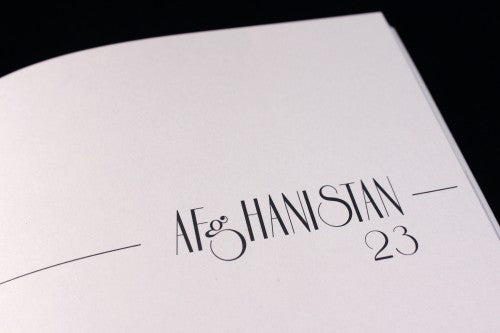
Out now: Matter #3

When so many words about current and crucial topics are constantly being delivered to our screens every second of the day, it can be hard to sift through the glut in order find good, intelligent and genuinely provocative journalism. That’s why what Matter does is so important – the editors choose a different region for each issue and commission intelligent writing on the subject so that a collection of perspectives exists all in one place – and for this issue they’ve picked the delicate and knotty matter of the Middle East.
The writers range from well-established journalists for Aljazeera and the Telegraph, examples like the bombastic Brendon O’Neill or award-winning photojournalist Zoriah Miller, to writers like Jenny Nordberg who founded BachaPosh.com (a great site that investigates the undocumented phenomenon of Afghani girls who are secretly raised as boys). Each essay is concise and engagingly written – short enough not to be overbearing but long enough to inform and develop an argument. The magazine departs from the traditional view of international affairs by investigating the conflict through the perspective of philosophy, art, photography, gender studies, architecture and design.
Issue three is titled ‘People between the Lines’, and an emphatic line on the cover is the first of a key design trope that subtly runs throughout the publication. The beautiful woodcut by Harriet Bruce, where contorted bodies fit into square lines, visualises the concept at the heart of magazine: from far away it looks like a pattern but up close we see the people inside, and this magazine wants us to look up close, to actually think about the social reality of living in the middle east. The cover paper stock is a bit flimsy though, which is a shame because elsewhere the concept and execution is well crafted and strong.


The line of a desert horizon on the first page is positioned carefully to match up with a line that structures the contents page (above). Here, the contents page is intriguingly laid out as if it were a landscape, mirroring the region’s territory. Lettering also evokes the fragmented geography of the Middle East through an unstable juxtaposition of upper-case and lower-case letters (below).
The first essay considers the ‘People between the Lines’, an investigation of the psychology of boxing people into separate groups and equating difference with ‘enemy’. Lines hem in the pull-quotes (above), so both visually and textually, Matter encourages us to think about the things in-between; the grey areas of a topic that is often thought of in terms of black and white, of good and evil.

Three particular essays stand out for me, all of which attempt to broaden the reader’s horizon. A piece about Iranian feminist filmmaker Shirin Neshat gives an unconventional perspective of female Iran; an essay on architecture considers how design is used to spatially implement ideological divisions; and a piece on social media’s role in bringing the war into the online realm is particularly thoughtful. Robin Marshall thinks about the invisible lines that exist in social media, how your online existence is actually made of a highly personalised and selective network, and how it is very difficult for other ideas to find their way into your connective sphere.
This last essay makes a point that puts into perspective why it is so refreshing and encouraging to read a magazine like Matter – the breadth and depth of pieces are an amalgamation of ideas that you’d never find links to all on the same twitter stream. And visually, Matter is a good example of how a heavily text-based magazine can use design to subtly convey a theme that strings the essays together; its design creates peaceful cohesion and emphasises the similarities of disparate texts.
Review by Madeleine Morley




